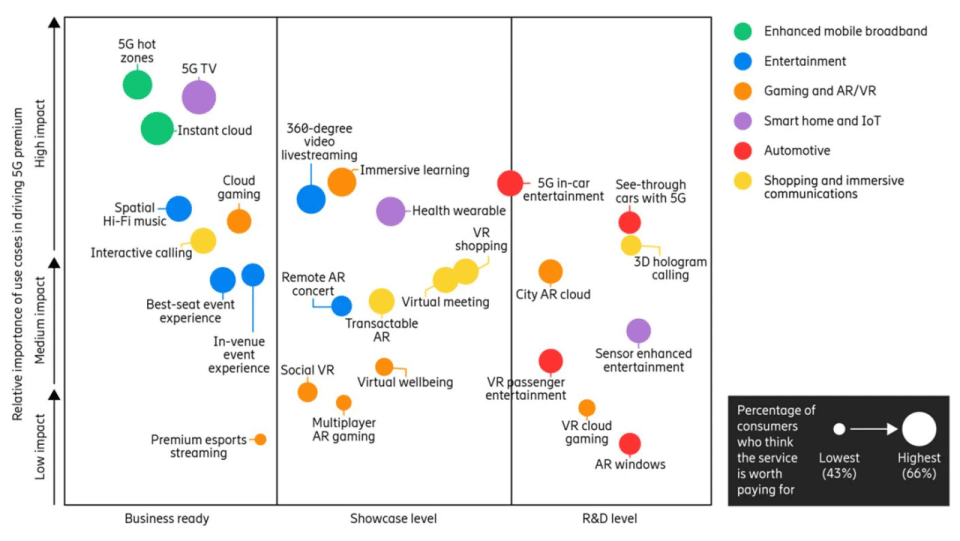What does a good murder mystery have to do with telecom?
I am talking about the mysterious Killer-App running on the 5G infrastructure and makes that investment worthwhile for service providers (SP).
The question circulating amongst service providers around their 5G infrastructure investment, is whether it is even worthwhile for SPs to make that investment. This goes back to 4G, which also held some ROI promises, but didn’t really deliver them as expected, while expanding to the hyped 6G mobile use case. It even extends “sideways” over to another ROI dilemma in the edge cloud field.
Some of the questions going around the service provider community:
- What is the elusive “killer app” that justifies the financial investment, with high expectations for amazing returns and game-changing market adoption?
- What is the required platform to run this “killer app”?
- How close to subscribers should it be?
- Who will be the major stakeholder to step up and invest?
- Who will cash in on it, and will it be the same player?
- Will a public organization take the lead and democratize the benefits to serve the whole industry?
Too many questions? That’s how a good detective gets started
There are lots of examples from the past to address every single question I raised above, with multiple and different answers for each one. However, lessons from past experience do not really help with solving the mystery of the 5G infrastructure investment.
Wisdom of the crowds does not help either. Over the last few years, I had the opportunity to discuss this topic with so many people that some could say I am obsessed about it! Was I able to get an answer from all these discussions? Absolutely!
But not just one, consistent answer, but many…
Exploring options that COULD make 5G investments worthwhile
Let’s take a look at the suspects involved in our mystery, (or, in other words, what is the ‘killer’ we are looking for).
Suspect #1: Industry robots.
High precision synchronization between autonomous machines acting simultaneously at the factory floor without human intervention, Industry robots can communicate to an AI-enabled control mechanism via a private 5G network. Various indicators contribute to failure prediction, and automatic tuning and correction functions offer prevention mechanisms. This scenario requires high availability and reliability, constant bandwidth, low-latency connectivity and proximity to a service point that is also accessible remotely from the internet in order to allow human intervention. High (and still constant) BW network capacity is also required when raw video footage is part of the communication feed being taken into the control function.
Suspect #2: Cloud gaming.
Very low-latency connectivity to a game server while players use an end device, only without a full gaming console. Players are paying for subscription instead of for a machine. Flat (and low) latency is needed to cater to a fair game between players. For users playing from home, as well as mobile hand-held users, constant connectivity to the broadband network is key. Traffic patterns can be extremely spiky, ranging from absolute zero and to a complete data storm. It’s a very high revenue industry, where console vendors already realize it is a content-based game and not a platform-based one.
Suspect #3: Video on demand.
Home and mobile based users consuming specific video outside broadcast channels require high BW with fast response time from servers… Ok, just checking if you are still alert. This has already existed for years and it is indeed a killer app!
Suspect #4: Autonomous vehicles.
Wireless connectivity of multiple moving devices, including an array of sensors, need to be both processed locally and communicated to the grid and to nearby vehicles via direct point-to-point or via a shared service point. This requires very low and predictable latency and very reliable connectivity, fail-safe registration to networks, and various BW demands between subscribers and the network.
Suspect #5: Remote surgery (and other tactile internet applications)
While located remotely, machine-assisted surgeons can operate on a patient, applying their unique skillsets to a greater number of patients. Patients can even be in several locations, with one expert serving them all from “somewhere” on the grid. This requires very low and flat latency, high reliability, and high bandwidth.
Suspect #6: VR live event experience.
This one is my favorite. When done right, users can experience a “live event”, even when they are not physically at the stadium where a game takes place or in the theater where a concert happens. This can be extended even further, since the virtual nature of the experience means you can be sitting in the front row or even better, on stage, or on the court with the other players. This requires compute capacity to be present in proximity to the user, stable latency, and a reliable connection, otherwise the experience will result in nausea.
Suspect #7: Smart home/city IoT.
Well, there are many applications here, and I will spare you the details. The ultimate need is to connect a lot of end points, cover for traffic spikes, and deliver the potential speedy growth of network requirements.
The list goes on and on, but I hope you get the idea: infrastructure requirements are spread all over the place. The fact that any of the above “suspects” can be “the one” – the ultimate killer app – or be one of those apps that ultimately makes a difference. It means the infrastructure in place should be ready for all of the above scenarios. Not only that, it needs to be ready to meet future demands as well.
Bottom line: Lack of readiness means sacrificing future revenue
Not being ready for these potential killer apps means giving up on your future. It is not really a question of whether to invest, but where and how.
This question isn’t just a personal hobby. Other market experts are also playing detective here and showing some great results, with lots of apps from various domains in different stages and impact rates:

Diagram source: (PCMag: Without a Killer App Who Needs 5G)
A few things are quite clear from this very elaborate chart, even if it’s still missing some sectors, such as industry, healthcare, etc. First, apps are coming from many different and independent domains. This means that the success or impact level of one does not hinder the others.
Second is a real shocker: people’s willingness to pay for such apps is somewhat relative to the maturity of the apps and their readiness for deployment (DUH!) This basically means that most people are willing to pay for what they see and feel, but not for what they are promised! Let’s pause to recover from the shock of that…
The third point becomes clear after looking at the chart for some time. It’s a snapshot: while the Y axis indicates the financial value of the app, the X axis is not maturity, as listed, but rather a timeline. In the same way that the Y axis can grow indefinitely, so does the X axis. New apps will keep on coming, since at the time when this snapshot was “taken,” some of them were merely invisible dots.
Conclusion: Service providers need to stay alert
My conclusion is rather simple: did we already encounter that single ‘killer app’ that justifies the huge hype I described above? Is that single app still in a future that we haven’t seen yet? Is there one single app at all? Or is it a group of apps that will create enough financial gravity?
The clear answer to all these questions is, well, “who knows.”
This means service providers need to stay alert, agile and flexible. They need to build their network in such a way that they can scale without scrapping equipment, introduce new functionality without adding hardware, and respond to spiking trends faster than others. Or, as we like to say here at DriveNets, build networks like cloud.
Oh, and about that killer on the loose, no spoilers. Like with any good story, you will have to keep guessing and wait till the end.
White Paper
DriveNets Multiservice - Maximizing Infrastructure Utilization




